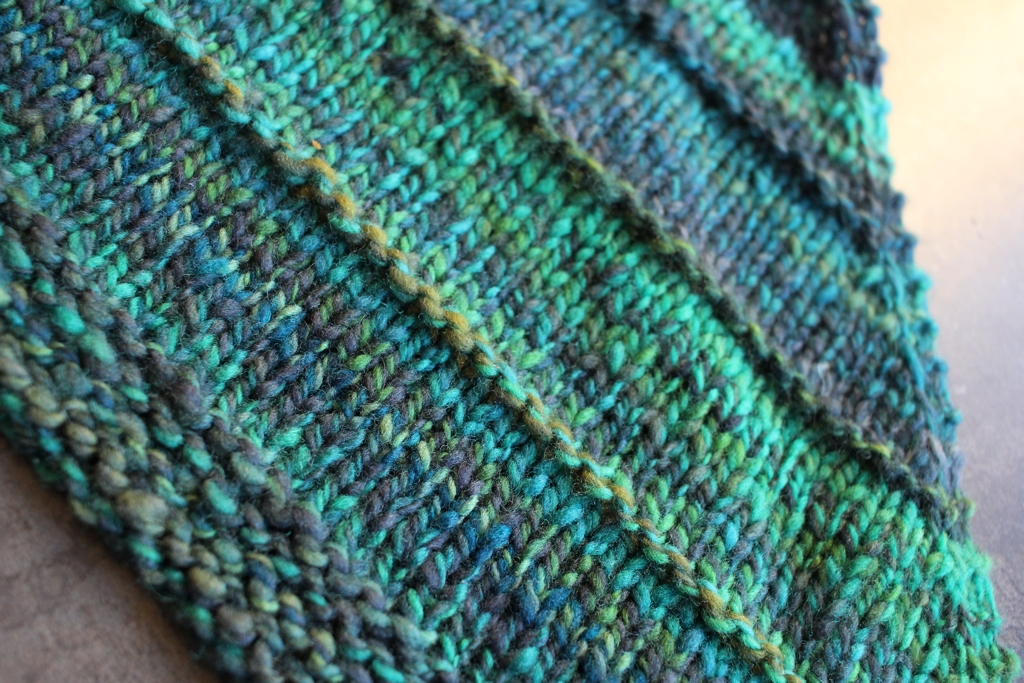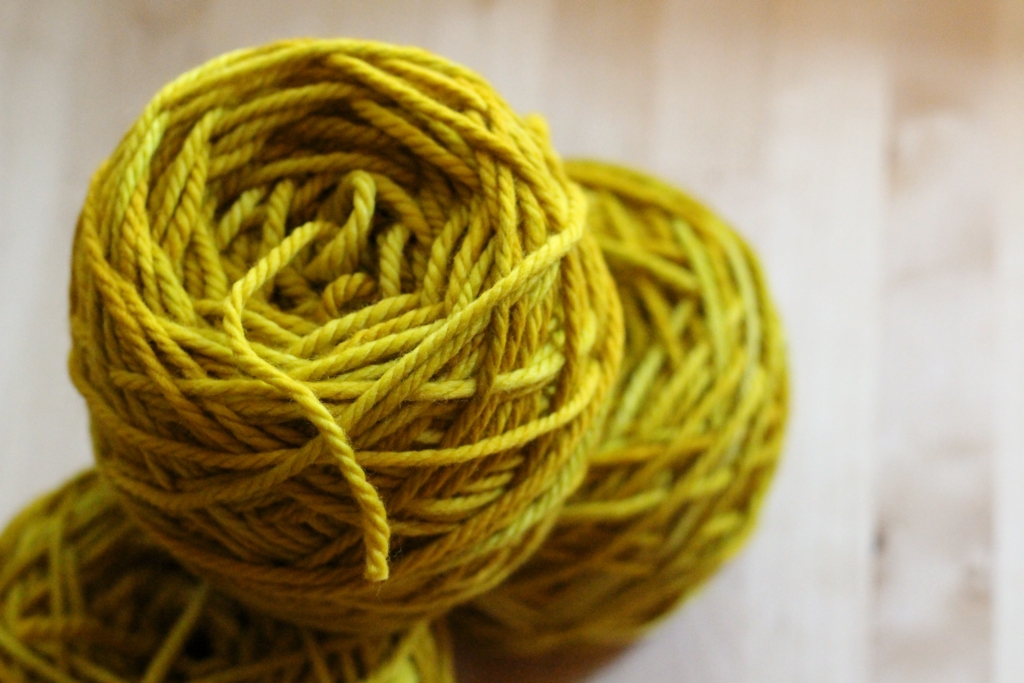A Handspun Boneyard
/I’ve wanted to knit a Boneyard Shawl for years. Not with the burning desire that makes you drop everything and head to the yarn shop, but when I eventually found the right yarn. Eventually is the key word. I wanted a variegated yarn that’d be fun to knit and fun to wear. I’d know it when I found it. I didn’t find that perfect yarn because I ended up spinning it during the 2017 Tour de Fleece. It’s a thick-and-thin variegated mix of greens, blues, and browns. The skein is one of my favorite yarns that I’ve spun this year, and was thrilled that I had enough yardage to make something big out of it. Well, bigger than a hat anyway.
With 260 yards of aran weight to work with, I knew it was finally time to cast on for a Boneyard Shawl. So I did, and it was a fun knit. The shawl was so hard to put down because it was good auto-pilot knitting and I wanted to see what color would come next. The only change I made was to switch out the m1’s for lifted increases.
The only trouble came when I was trying to figure out how much shawl I could knit. There were still a few yards left and I didn’t want to waste any of them. So, the Boneyard sat on my desk for months, mocking me, while I worked on other projects. The shawl would probably still be sitting on my desk too if I hadn’t needed a break from all my holiday gift knitting. I’d knit 7 ridges already and decided to start the edge and see how far I got. A few tv shows and an inch of garter stitch later, it was time to bind off. Why did that take me so long to do? Ugh! At least I made the most of the yardage.
It may have taken years to find the right yarn and also a good bit of procrastination, but this Boneyard Shawl is just what I imagined. It's cosy, just the right size to wear under a coat, and special. Also, it feels good to knit with my own handspun in the same year that I made it. Who knew?
The Details
Pattern: Boneyard Shawl by Stephen West
Yarn: 253 yds 2-ply aran weight handspun
Needles: US 9 (5.5 mm)
Dates: August 20 - December 2, 2017
@Ravelry

















































